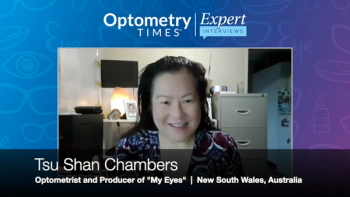
Recent study highlights retinopathy risk from hair dye use
Researchers described the presence of multiple bilateral serous retinal detachments (SRDs) found in 3 women after they used hair dyes.
A recent French study reported that aromatic amines in hair dye are associated with the development of retinopathy,1 according to Nicolas Chirpaz, MD, first author, from the Ophthalmology Department, Edouard Herriot Hospital, Hospices Civils de Lyon, Lyon, France.
Chirpaz and colleagues described the presence of multiple bilateral serous retinal detachments (SRDs) found in 3 women after they used hair dyes.
The retinopathy associated with the use of hair dye aromatic amines (RAHDAA) mimicked mitogen-activated extracellular signal-regulated kinase (MEK) inhibitor–associated retinopathy, involving the mitogen-activated protein kinases kinase enzymes MEK1, MEK2, or both, the authors reported.
After the women stopped using the hair dyes, the retinopathy resolved.
Representative case
A 61-year-old woman reported blurry vision bilaterally a few days after applying hair dye containing aromatic amines called para-phenylenediamine. The right and left eye visual acuity levels, respectively, were 20/40 and 20/20.
Optical coherence tomography (OCT) imaging showed the presence of multiple SRDs in both eyes that largely were located in the posterior pole and diffuse thickening of the neurosensory retina. Fundus autofluorescence showed hypoautofluorescent SRDs.
The choroidal thickness through the fovea was 250 μm, without pigment epithelium detachment or abnormally dilated choroidal vessels that might be associated with central serous chorioretinopathy, the authors described.
Four months after the initial examination, the SRDs resolved and the vision in the right eye was 20/20.
The authors noted the importance of the differential diagnosis to rule out sarcoidosis, oculocerebral lymphoma, and possible acute exudative polymorphous vitelliform maculopathy. They diagnosed RAHDAA based on the temporal association between symptoms and hair dye exposure, consistent with the description including OCT appearance (multiple SRDs predominantly located in the posterior pole and neurosensory retina thickening),2 they said.
At the 4-month examination, the SRDs completely resolved. Hyperautofluorescent subretinal deposits were seen on OCT images without residual SRDs.
Four years later, the patient reported using hair dye that was free of aromatic amines and has not experienced a recurrence. Visual acuity remained 20/20, although subretinal deposits persisted.
“RAHDAA presumably is a rare condition. Its presentation closely resembles MEK inhibitor–associated retinopathy.3-5 It should be considered a diagnosis of exclusion after other potential diagnoses including central serous chorioretinopathy have been ruled out,” the investigators concluded.
References:
Chirpaz N, Bricout M, Elbany S, et al. Retinopathy associated with hair dye. JAMA Ophthalmol. 2024;142:1094-1096; doi:10.1001/jamaophthalmol.2024.3453
Faure C, Salamé N, Cahuzac A, Mauget-Faÿsse M, Scemama C. Hair dye-induced retinopathy mimicking MEK-inhibitor retinopathy. Retin Cases Brief Rep. 2022;16:329-332; doi:
10.1097/ICB.0000000000000969 Murata C, Murakami Y, Fukui T, et al. Serous retinal detachment without leakage on fluorescein/indocyanine angiography in MEK inhibitor-associated retinopathy. Case Rep Ophthalmol. 2022;13:542-549; doi:
10.1159/000524558 Méndez-Martínez S, Calvo P, Ruiz-Moreno O, et al. Ocular adverse events associated with MEK inhibitors. Retina. 2019;39:1435-1450; doi:
10.1097/IAE.0000000000002451 Duncan KE, Chang LY, Patronas M. MEK inhibitors: a new class of chemotherapeutic agents with ocular toxicity. Eye (Lond). 2015;29:1003-1012; doi:
10.1038/eye.2015.82
Newsletter
Want more insights like this? Subscribe to Optometry Times and get clinical pearls and practice tips delivered straight to your inbox.



















































.png)


